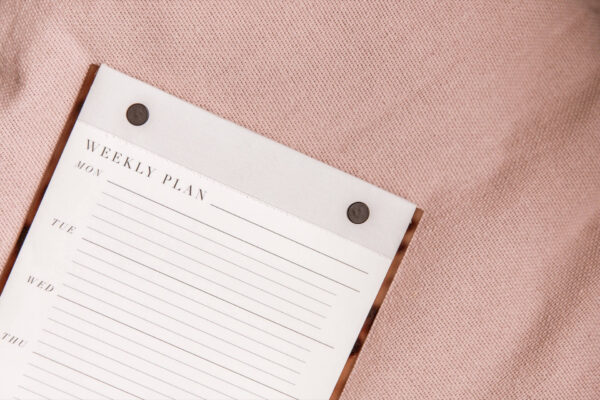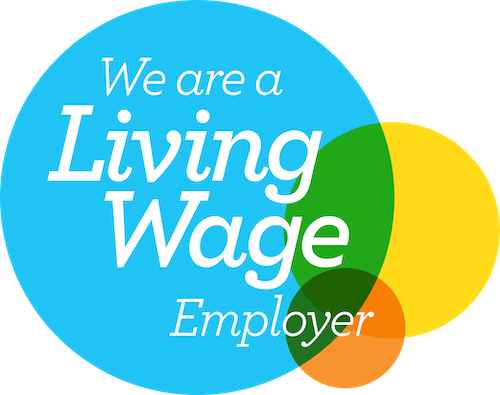Magazine and print advertising isn’t dead, and it isn’t out of reach for small creative businesses. It is, however, much less popular than it used to be. Digital marketing opportunities are often much easier to measure, more flexible, more transparent and more accessible, but that doesn’t always mean that you should rule out magazine advertisements – especially when they just make sense for you.
At the end of last week I started a one-woman crusade to reveal how Bristol Life magazine chooses to mislead small business owners in order to sell advertising content. This local glossy magazine utilises a sales tactic that has been around for decades – the bait and switch.
Get attention with an ‘opportunity’ to be ‘featured’ for great ‘exposure’, have the small business owner feel excited and validated, then drop the bomb that actually this will cost a ‘small’ amount of £200.
I’m going to write a follow up piece that delves into a little more detail on why this tactic is used and how it works, but I thought I’d sidetrack into something hopefully a little more helpful – how do you calculate when a magazine advertisement is right for your small creative business?
Advertising is not PR, advertorials are not editorial.
I love seeing the affects of great PR for our marketing clients. One banging write-up in the Guardian Gift Guide can literally turn a good Christmas into a muthafluffin baller Christmas, trend reports can sell out your favourite products, and that proper nice blogger who loved your last collection has generated 100 people queuing up to line your pockets.
These features are editorial, meaning they are produced without a financial incentive. The right editorial content can work wonders, and I’ll leave it to our good friends at LFA and PR Dispatch, or Bristol-based favourites Konichiwa and Arrow Publicity to show off the very best of PR.
The opportunities we’re going to cover are traditional advertisements or editorial-style advertisements – cleverly called advertorials – so basically any published inclusion that comes with an invoice attached.
Is this within your marketing budget?
As a small business owner, we all have solid strategies and annual plans with budgets for stock, cost of selling, PR, marketing, staffing, coffee breaks, Taco Tuesdays etc etc, right?
I don’t. And I’m guessing a lot of people reading this don’t either – that’s totally ok. I mean, we defo *should* be organised right now, but we’re not, ok?! Get off our backs, mums.
Anyway, even if we don’t have the figures and percentages written down, we all have a good idea of how much we can afford to invest in our businesses at any given point. So for my first tip, I want you to totally forget about what we’re investing this money in – just think about the amount itself.
Does it feel good, right now on this day, to spend £200?
Could you afford to lose it all?
Now let’s get to thinking about print advertising. Like any marketing opportunity, there’s a degree of risk involved – even the most solid strategies and creative campaigns can result in a negative return on investment (ROI), and feeling like your money has been flushed down the loo.
Some marketing channels are riskier than others. Email marketing (which is the absolute tits) has an average ROI of over 3,000% – no, that’s not a typo, I told you it was the tits – but there are still some people who will not make a penny from our inboxes.
Social media and Google advertising can achieve up to 350% ROI when done right, which is a well sexy number. Print advertising? There are no consistent numbers – because it’s one of the riskiest channels going.
Unlike digital media, printed publications don’t have cold hard stats for advertisements – we can’t optimise, we can’t review objective information – we can only rely on projections, subjective opinions and previous case studies.
Just like my inspo bae Judge Judy says – if you can’t afford to lose it all, don’t give it away. Focus on the more reliable channels first.
How could you win?
It’s not impossible, or even that difficult to estimate the possibility of a positive ROI from print advertising.
If you primarily sell greetings cards, you might have £1.50 margin on your products. If you buy ad space for £200, you’ll need to sell extra 167 cards to generate a positive ROI, and that just doesn’t seem realistic. You might not even have that many in stock, or the facilities to pack and post the extra products.
If you sell designer kitchens with a £50,000 margin, you could run 49 ads at £1,000 a pop, sell 1 kitchen and still have a positive ROI. That does seem realistic.
What are they actually ‘selling’
As the not-very-old but very-apt saying goes – you can’t pay rent with ‘exposure’. If you’re approached with a great opportunity for ‘exposure’, you can call bullpish right then and there.
As with any business investment, it’s super important to know exactly what you’re getting for your money.
- How much space
- Which page
- How many others will be offered the opportunity
- If it’s a traditional advert, what are the design specs
- If it’s advertorial, who is producing the content and are there guidelines
- How many pictures will you need
- What is the print deadline
- When will it be published
- Is it online too
- Will there be any social media support
Get a copy of the magazine.
I can’t emphasise this one enough – with print advertising there’s no way of knowing exactly what you’re buying, unless you can see it in front of you and smell that new magazine scent.
If it’s a free local magazine, they should be happy to send you a copy – after all, if they want £200+ from you, the least they can do is pop a magazine in an envelope. If it’s a publication with a price tag, go buy it, and read it.
Have a look at the content that sits around the ad space you’re reviewing. If it’s right at the back, do you think most people would get this far? Look at the ads already in the magazine, would you be happy for your business to sit next to them?
Let’s talk reach, not ‘exposure’.
Exposure is bullpish, did I mention that? Reach on the other hand is something we can measure with a useful degree of accuracy. Every magazine should have a media pack which will contain key stats on their circulation (how may copies they print and send out), distribution (where they sell/send the magazines), demographics (the stats about their readers ages, estimated income, what cars they drive*) and some proof points, e.g. 90% of readers say they have bought something after seeing an ad in our magazine.
We can use these numbers to roughly estimate how many pairs of human eyes will see our ad. Let’s make a little example, I sell a product which is targeted at women in Clifton and Cliftonwood in Bristol, and I have been approached by a free magazine with a circulation of 10,000 to pop a quarter-page ad in the last few pages of the publication.
- 30% of magazines don’t get read because they’re free and went straight in the recycling: 7,000 pairs of eyes left
- 50% are men: 3,500 pairs of eyes left
- 80% are not in Clifton or Cliftonwood: 700 pairs of eyes left
- 5% actually get to the back page where my ad sits, and pay attention: 35 pair of eyes left.
Would I pay £200 for 35 pairs of eyes, and is there a chance in bejeebus that those 35 people would buy 167 greetings cards? Nah dawg. Nah.
Those sums are just for this example, but you should be able to run your own numbers pretty easily.
Ask for experiences from previous advertisers.
A wonderful-yet-sad consequence from my Bristol Life magazine crusade was that I had about 100 messages from lovely small business owners sharing their experiences with paid magazine opportunities.
Some just to say they also felt crappy after being contacted by Bristol Life, some to say they knew what was coming and just wished sales people would stop trying to trick them, because it’s patronising AF and wastes their time.
A handful had actually booked the space, either this time or in a previous edition. Of those, a couple felt scammed because they didn’t realise that they weren’t buying editorial content until I’d shared the story. The rest differed between minor success and no uptake in business.
But all were willing to share their thoughts. That’s another benefit of getting a copy of the magazine, you can find who has paid before, and pop them a lil Insta DM or email and find out if they feel it worked for their business.
Does it fit within our current marketing campaign?
As a marketing consultant, this would be my most important question. Print magazine advertising works best as part of a larger campaign – when websites, email marketing, social media, outdoor ads, podcast spots, multiple magazine entries and more are all working together to add your brand and your message to your audience’s psyche.
It’s crazy hard to do that from just one ad. Crazy hard, yo.
Are you aligned, ethically?
When it’s your business, it is personal. You get to make the decisions, and you’re allowed to go with your gut.
If you get approached via Facebook Messenger with a bait and switch, not even the respect of a media pack, and it makes you feel icky – that’s probably not the right opportunity for you.
You can skip all the ROI, reach calculations and opportunity analysis. Someone has been a bit of a dick, and you’re well within your rights to write them off immediately – I know I would.
That’s all very helpful Aime, but I just want a yes or no answer for advertising in magazines.
Ok ok, well thanks for reading the last 1,597 words or scanning the subheadings to get this far.
If you were to ask me if you should should advertise in a magazine, and all I knew was that you ran a small creative business – I would say no.
Everything we stand for at Studio Cotton is using our limited small business budgets in areas most guaranteed to generate a positive ROI, to allow us to grow our little empires. Print magazine advertising is risky, expensive, hard to monitor, impossible to optimise and just not as good as the other marketing channels at our disposal. So let’s get those right first.
The exception to the rule: small supporting small
Remember when I said you can say no to advertising opportunities because they make you feel icky? You can also say yes when it makes you feel all warm and fuzzy.
Print magazine advertising is still risky, but if I’m going to take that risk – I’m going to invest my budget in a publication that I love.
Courier is a great magazine based in London but fits right in with the vibe of Bristol. It’s filled with independent spirit and supporting other small business owners.
Nearfield is a ludicrously lovely magazine from some of the people behind Circus (RIP, we still miss you), local to Bristol and Bath, and distributed within some of my favourite independent shops. It’s just launched in 2023, so feels fresh and exciting.
If you’re looking for a magazine that’s all about the makers, then We Are Makers gives you just that. It’s a beautiful magazine and I never fail to spot something I love in it.
91 Magazine is a stunning publication with an amazing editorial-to-advertising ratio, spotlighting and celebrating small businesses whilst producing a high-quality advertising opportunity.
There are many more amazing magazines that will be aligned with your ethics and your business, so please don’t discount them all based on the bad pitches.
Now go out, buy a nice indie magazine, and enjoy a lovely latte whilst you peruse some great stories.
—
*this sounds stalking but is entirely possible and wonderfully interesting and creepy and I love it and I hate it. Check out Experian Mosaic to be impressed and possibly terrified.
























